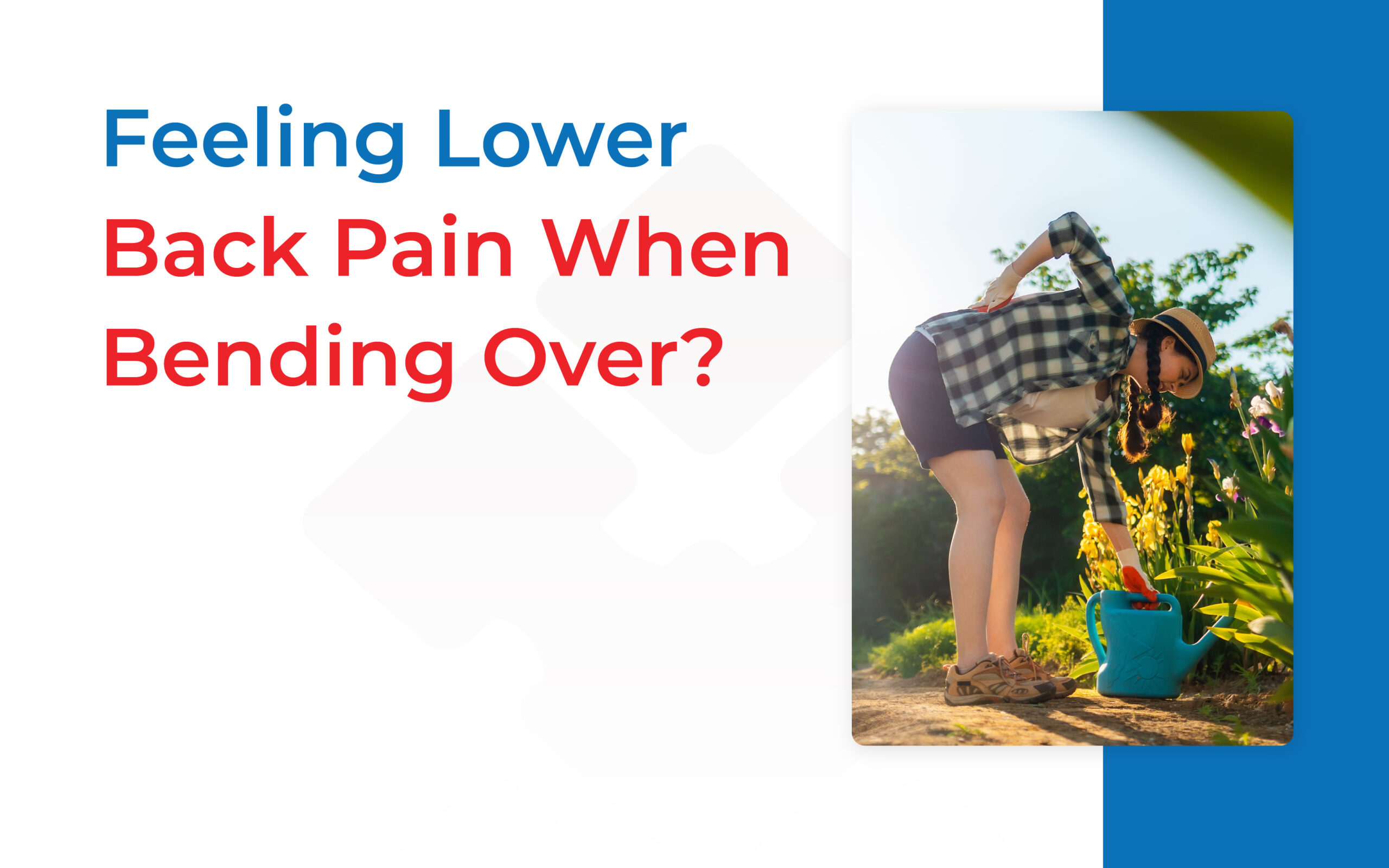Pain can be a barrier to one’s ability to perform basic, daily tasks. But when that pain just won’t go away and affects a very specific movement — such as chronic lower back pain when bending over — it’s time to get some professional help.
Chronic pain, especially in the back, can bring everyday life to a standstill. Even simple movements like picking up groceries or tying your shoes can be an excruciating experience.
If you’re experiencing this kind of agony, you have multiple options for getting that pain properly diagnosed and treated so you can get back to living your life on your terms. In this post, we’ll take a closer look at the causes and symptoms of lower back pain when bending over, how to treat it, and where to find help.
What Causes Lower Back Pain When Bending Over?
There are a variety of conditions that can cause patients to experience lower back pain when bending over. Here are a few of the most common:
Sprains and Strains
Lifting heavy objects improperly, overusing back muscles, or sudden awkward movements can stress the lower back and cause stiffness and muscle spasms.
Herniated Disc
The discs in your spine act as cushions between the vertebrae. If the soft inner core of a disc pushes through the tough outer shell, it can irritate the nerves around your spine, causing pain, numbness, and/or weakness in your lower back, and may also radiate down the leg.
Spinal Stenosis
This narrowing of the spinal canal can put pressure on the spinal cord and nerves. Spinal stenosis can be especially painful when walking.
Arthritis
Osteoarthritis is a degenerative joint disease that can cause pain, stiffness, and swelling in the lower back.
Facet Joint Syndrome
These small joints connect the vertebrae in your spine, and inflammation of these joints can create pain in the lower back, especially when bending over or twisting.
Sciatica
This condition involves irritation of the sciatic nerve, which runs down the back of your leg. Bending over can aggravate sciatica, causing pain, numbness, and weakness in the leg.
Symptoms to Look Out For
While some form of pain in the lower back area is the primary symptom, there are other signs associated with bending-related movements that might point toward a more serious problem, including:
- Pain that radiates down your leg
- Numbness or weakness in your leg
- Difficulty walking or standing
- Loss of bladder or bowel control
If you experience any of these symptoms, see your doctor as soon as possible.
Treatments for Chronic Lower Back Pain
If you’re experiencing chronic lower back pain, it’s important to seek help from a medical professional. Your doctor or a pain management specialist can diagnose the precise cause of your pain and recommend an appropriate treatment plan for you, which may include one or more of the following therapies:
Rest and Physical Therapy
Rest allows your body to heal, while physical therapy can strengthen your core muscles and improve your flexibility, reducing the stress on your back.
Medication
Over-the-counter pain relievers like ibuprofen or acetaminophen can help manage pain. In more serious cases, your doctor might prescribe stronger medications, although these are typically recommended only for short-term pain relief.
Cortisone Injections
Also referred to as steroid or corticosteroid injections, this treatment delivers anti-inflammatory medication directly to the inflamed area, providing targeted pain relief in joints, tendons, and muscles.
Nerve Blocks
Injections of anesthetic can temporarily block pain signals from specific nerves. By numbing the nerve signals, the block can alleviate pain in a particular area of the body. Nerve blocks have proven to be effective for both acute pain (short-term) and chronic pain (long-term).
Trigger Point Injections
These injections target specific tight muscles (trigger points) that can contribute to pain. A healthcare professional inserts a small needle into the trigger point containing a local anesthetic to numb the area and reduce pain.
Radiofrequency Ablations
This minimally invasive procedure uses radio waves to heat and deactivate pain-causing nerves.
Find a Pain Management Clinic
If conservative treatments like physical therapy and OTC medications don’t provide enough relief, patients should strongly consider visiting a pain management clinic. These practitioners are doctors, nurses, and other specialists who focus on diagnosing and treating chronic pain. They take the time to identify the actual source of a patient’s pain so they can provide highly targeted treatments for more effective relief.
HPM operates pain management clinics in rural towns across the country. Our mission is to bring these specialized treatments to communities that might not otherwise have easy access to them. You can find a location near you by visiting our website.
Lower back pain when bending over can be frustrating and highly disruptive to everyday life. By understanding the potential causes, symptoms, and treatment options available, you can take steps toward managing your pain and regaining your quality of life. Look for an HPM clinic near you and start your journey to reclaiming your life.


